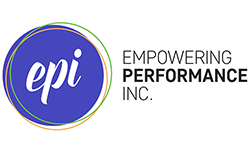The Unrealized Potential of xAPI
The rise of xAPI as a new standard for learning technology specification has been slow but steady. At EPI we’ve taken a particular interest in how to implement the data-harnessing power of xAPI in our elearning and leadership programs.
Over the past year, we’ve worked with a developer to transition a client from an LMS to an LRS (Learning Record Store), using a custom dashboard to access their learning materials. Our client has hundreds of employees in a variety of roles throughout the country. This makes the client a good candidate for a shift from the traditional LMS model to an LRS.
If you're new to the LRS, it's helpful to know that, while it's not for every organization, it does provide a few fundamental benefits. An LRS captures learning data generated from elearning courses as well as less traditional formats like video or mobile apps. And it also retrieves learning experience data that can inform us how to craft better training. An LMS allows us to track learner completions, but an LRS can track how learners engage with specific content and interactions within the course (e.g., the order of items clicked on, text entry data, etc.).
Working with our client's LMS-to-LRS transition, we’ve learned a lot about xAPI’s capabilities (and limitations). But we’ve come to understand that we're seeing just the tip of the iceberg. Recently, we were thrilled to participate in a workshop run by Learning Ninjas’ Brian Dusablon and Sean Putman. We gained new insights into creative ways to use xAPI, as well as answers to practical questions like how to implement new standards in established technology.
But for those of us in elearning, the most important inquiry may be: Now that we can gather great amounts of data with xAPI, how do we do it well? And what do we do with that data once we’ve got it?
The Learning Ninjas had a few things to say about this. When it comes to data collection, they emphasized, make sure to create a comprehensive data strategy in the early phases of development. Here’s what they recommend:
Interview all the potential key players who could use data obtained from a learning project.
If you’re using a storyboard, review it thoroughly and identify what information is worth pulling from each segment of the course.
Take the time to reflect on and plan what you’ll do with specific data. How relevant is this information? How actionable is it? If it seems “interesting,” but you don’t really have a plan for using it, skip it. As Sean advised, don’t just gather everything and decide later what you want to use. There will be just too much to wade through.
What we know and how we know it, is still at the heart of elearning development. And as the Ninjas shared, xAPI has the potential to change how we design our courses. It could also change how we follow up with learners to continue their development.
For example, if 60% of learners stopped in the middle of the course and returned at a later time, the course may need to be shortened or chunked differently. That’s useful data for the designer and developer.
Or we might see that 45% of learners failed quiz questions related to sales tactics. Can we revise that course section to teach it more effectively? Or does the subject require blended learning or supplemental instruction in the form of job aids? There’s a lot of excitement and dreaming about what's on the xAPI horizon. We all wonder how it can be seamlessly integrated into workflow, data collection, and learning evaluation.
One widespread critique is that major elearning tool developers have yet to integrate xAPI into their platforms, beyond basic statement generation at the publishing phase.
If you’re willing to wade into changing code in the published content, this is not a problem. However, as the Ninjas suggested, it would be significantly easier for designers and developers if the software allowed us to select specific and meaningful statements during the development process.
The unrealized potential of xAPI is clear and we have our fingers crossed that the leading software developers will take us to the next level. After all, if we’re serious about providing engaging and useful learning experiences, xAPI is one way to really measure just how well we’re doing.
Additional xAPI resources for your enjoyment:
Is xAPI Ready? If so, Where Are Our Flying Cars?
...via Learning Ninjas:


